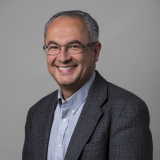Understanding and inhibiting mechanisms of metastatic spread in osteosarcoma

Project Team
- Alejandro Sweet-Cordero, MD, University of California San Francisco
- Poul Sorensen, MD/PhD, BC Cancer, Provincial Health Services Authority
- Anna Obenauf, PhD, Research Institute of Molecular Pathology, Vienna Biocenter
- Sam Aparicio, PhD, BC Cancer, Provincial Health Services Authority
- Katie Janeway, MD, Dana-Farber Cancer Institute
Osteosarcoma is a disease that is highly heterogeneous, meaning that no two tumors are alike. It is also likely that even within one tumor, each cell in the tumor is different from others. Our studies focus on understanding this "intratumor" heterogeneity. Understanding intratumoral heterogeneity will help us understand two key features of osteosarcoma: resistance to therapy and metastasis. Both of these features are probably driven by just a few cells within a tumor that have special abilities to resist therapy and spread within the body. To study osteosarcoma at this level, we need special tools that allows us to study single cells within tumors. We have developed a team of experts in this type of analysis. We also bring together experts in osteosarcoma therapies so that we can test these new therapies and understand what they do at the level of single cells.
Project Goals:
Our goal is to understand how osteosarcoma cells survive in the body once they have spread from the initial tumor. The best chance to treat metastasis is when they are very small and not yet visible. These "micrometastasis" need to find ways to survive in the lung and other tissues. Because this is not their normal environment, survival requires adaptation to the metastatic site. We have deveoped several new tools that we think will help us understand this process. These tools allow us to identify cells within tumors that have high capacity to survive in the metastatic environment and then isolate these same cells from the original tumor. We call this a "molecular time machine." Also, we have developed several new models of osteosarcoma that are specifically designed to study metastasis. Our team of investigators is highly complimentary in terms of expertise and we hope to bring this expertise to find new therapies for osteosarcoma. Our effort will also involve taking our findings and developing new clinical trial concepts. At the end of our studies, we hope to be poised to begin at least one such clinical trial once specific funding for the trial is obtained (as the trial itself will not be funded through this mechanism).
2024 Update
Metastasis is the primary clinical problem that negatively influences prognosis in osteosarcoma. The problem of metastasis is complex and requires new technologies which so far have not been applied to osteosarcoma. A major technology to be applied in our studies is called CaTCHseq. CaTCHseq represents an important technology to help answer central questions in our research, e.g.:
- Which clones present in heterogeneous tumors are able to give rise to therapy resistance and metastasis?
- Which molecular programs drive these processes?
- Are these molecular programs acquired during the tumor evolution, e.g., at the metastatic site or during therapy exposure, or pre-existing in rare clones in primary tumors?
In our first two years of funding from ALSF, we tested methods to generate cell lines that are able to be used for CaTCH. We also analyzed several osteosarcoma cell lines using single-cell whole genome sequencing and this has revealed the heterogeneity of these cell lines with unprecedented resolution. Datasets and reagents to study osteosarcoma metastasis have now been widely shared with the members of our project. Overall, we are encouraged by the progress we have made and are looking forward to the work in year 3 of this grant.

